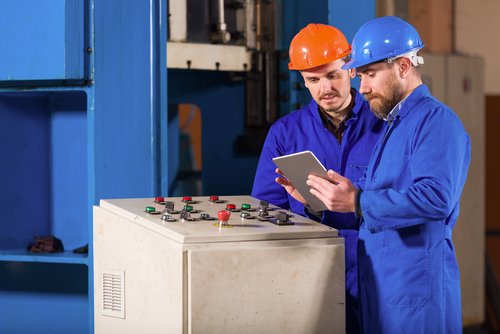How Computers Have Changed the Manufacturing Industry

By Alek S.
It’s not hard to see that computers have drastically changed the way that everybody lives in the 21st century. It’s even easier to point that fact out! However, computers and automation are definitely not done changing the paradigm, and don’t show any signs that they will be, anytime soon. Digital technologies have drastically changed the way that every single industry in the economy operates.
Indeed, if your business isn’t finding digital solutions to stay competitive, then maintaining any semblance of market share is pretty much impossible, and you’re probably facing an existential threat to your company, anyways. One industry that was among the most impacted by digitization was the manufacturing industry, which is why it remains such a hot topic in economic discussion, today. Here are some of the ways that computers have changed the manufacturing industry…
Increased drafting capabilities
Computer technology has enabled manufacturing professionals and designers to have a far greater control over specific details about their products in the way that it forever changed drafting capabilities. Nowadays, 3D CAD technology allows manufacturers to have a great deal of flexibility in their planning processes, which helps them find ways to reduce the amount of time it takes to produce a product, how much materials are used to produce a product, and how they can improve the quality of a product without negatively impacting production costs. Simply put, better drafting means better manufacturing, and it’s made possible through computer technology.

Automation processes
New technology has made certain aspects of manufacturing processes easily carried out through automation. Effectively integrated automation systems make it easier for businesses to follow through on compliance laws, keep track of inventory, manage their supply chain, handle consumer concerns, and so on. This has increased the productivity of factories and manufacturing plants, and has streamlined many business models. However, we are probably only seeing the infancy of this effect, and automation is a phenomenon that we can expect to see continue with greater latitude.
Mass production has increased
The Industrial Revolution was sparked by the creation of mass production and the factory model of business. However, even the largest companies back then couldn’t imagine the levels at which mankind would mass produce everything from cars to books to light bulbs to action figures that we are able to do today. The digitization of certain business processes has improved efficiency in each factory, which has emboldened the rates at which we are able to mass produce. Today, more factories isn’t necessarily better for a manufacturer, since computer technology has changed the paradigm to be about how much a single factory is able to manufacture.
Robotics has necessitated the need for new jobs
Although automation has improved so many aspects of the manufacturing industry, and has simplified processes like compliance regulations, which have the potential to be a threat to an entire business, there is another side of the coin that is a darker prospect. The truth is that these increases in robotics, computers, and automation have gotten rid of the need for manufacturing companies to hire people in the numbers they once did.
Sure, all of this new technology creates pretty good jobs. After all, somebody has to fix the robots and program the computers. However, it would be disingenuous to say that the jobs created by this technology are anywhere near as numerous as the jobs that this technology has made obsolete. Because of this fact, one major answer that technology needs to answer is how to create the need for new jobs that will be sustainable in the economy of the future.

Employee safety has improved
While we have lost out on jobs, due to automation and robotics, things have gotten considerably better for employees who still have manufacturing jobs. Because automation enables factories to quickly update policies and processes that contribute to the safety and wellbeing of workers, we now live in a time when it is safer to work on an assembly line than it has ever been before.


